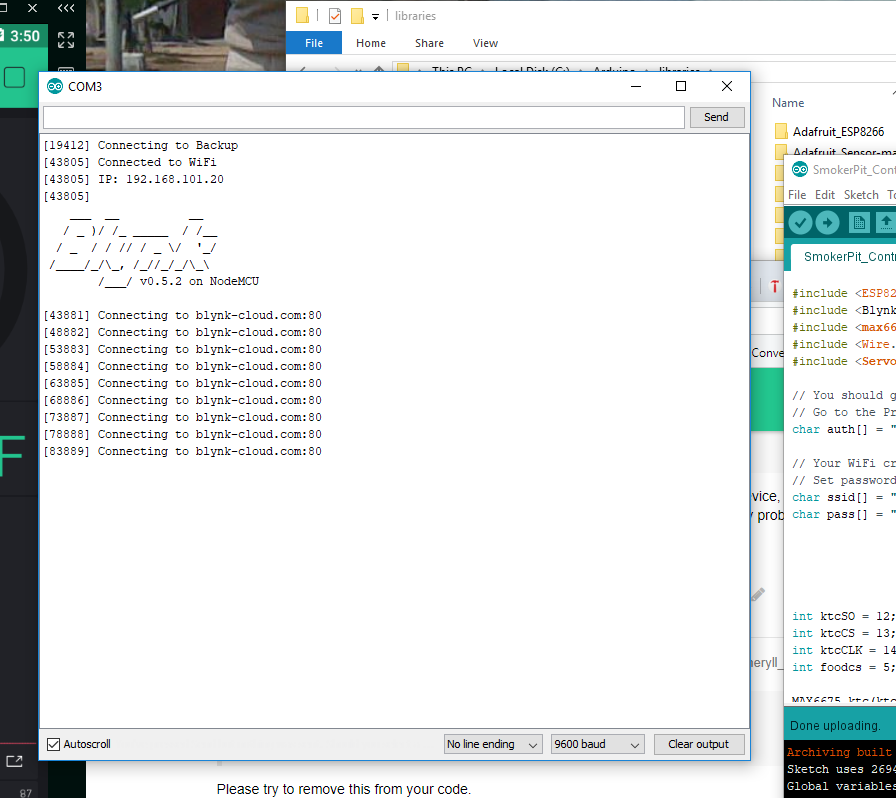Picture a world where your home gadgets, office sensors, and factory machines all talk to each other, working together without you being right there. This connected way of living, often called the internet of things, means we have so many smart bits of kit around us. Being able to check on them or fix something from far away becomes a very big deal, doesn't it?
It's like needing to adjust your smart heating while you're on holiday, or perhaps a sensor at a distant site needs a quick look. How do you reach out and touch these things when they're not in front of you? Well, there's a neat way to do just that, and it involves something called SSH. This method lets you peek inside and even make changes to your devices from a distance, so it's almost like being there.
So, if you've ever wondered about getting a firm grip on your connected gadgets, making sure they're doing what they should, or just need to sort out a small hiccup without a physical trip, then learning about SSH is pretty helpful. It gives you a direct line to your smart stuff, allowing for easy checks and fixes, you know, just like that.
Table of Contents
- What is SSH and Why Does it Matter for Your IoT Devices?
- The Secret Handshake for Secure SSH Login IoT Device Access
- How Does Remote SSH Login IoT Device Work?
- Getting Started with Remote SSH Login IoT Device
- Why Are Passwords Not Enough for Secure SSH Login IoT Device?
- Better Security with SSH Key-Based Authentication for IoT Device Access
- Can You Manage Your IoT Devices with SSH Login IoT Device from Your Phone?
- Beyond Basic SSH Login IoT Device - Scalable Solutions
What is SSH and Why Does it Matter for Your IoT Devices?
You might be asking yourself, "What exactly is SSH, and why should I care about it for my little smart gadgets?" Well, SSH stands for Secure Shell, and it's kind of like a special, very private way for computers to talk to each other. It makes sure that whatever information goes back and forth stays hidden from anyone who shouldn't see it. This is really, really important when you're dealing with devices that are out there on the internet, perhaps in your home or at a business location, so.
Think of it this way: when you want to get into your smart thermostat or check on a sensor that's miles away, you need a way to do it that's safe. You wouldn't want just anyone to be able to jump in and mess with your settings, would you? SSH gives you that safe path. It's a way to get full command over your gadgets and figure out problems with them, all without having to actually go and touch the device itself. It's quite a helpful tool, actually.
For your connected devices, having a way to get in from afar means you can keep an eye on them, make sure they are working right, and even fix little glitches without needing to pack a bag and travel. This remote way of handling things is a perfect fit for keeping your smart devices running smoothly and securely, you know. It truly helps make sure everything communicates and works as it should, with very little fuss.
The Secret Handshake for Secure SSH Login IoT Device Access
The core idea behind SSH, which helps with secure SSH login IoT device access, is making a very private connection. It's often described as the "secret handshake" of the computer world. This means that when your computer talks to your smart device using SSH, they first do a special check to make sure they both know who they are. Only then do they let the information flow, and it all happens inside a very protected channel. This channel keeps your data safe from anyone trying to snoop or get in where they don't belong, which is really quite clever.
This method means you can send commands, get information, or even move files back and forth between your computer and your smart device, and it's all wrapped up tight. For instance, you might want to send a new bit of software to your smart lightbulb, or perhaps pull some data logs from a remote weather sensor. SSH makes sure that these actions are carried out without any peeking eyes. It’s a very good way to keep your connected things safe and sound, in a way.
Because of this safe way of talking, SSH has become a go-to method for anyone who needs to manage smart devices from a distance. It means you can be sure that when you tell your smart garden system to water the plants, or when you pull up a report from an industrial sensor, that message is only going to and from the right places. It's a fundamental skill for people who like to tinker with tech or for businesses that use a lot of connected equipment, you know, just like that.
How Does Remote SSH Login IoT Device Work?
So, you're probably wondering how this whole remote SSH login IoT device thing actually gets done. Well, it typically involves a few steps to set up a direct line to your smart gadget. You'll usually have a piece of software on your computer, like PuTTY if you're using Windows, or just the built-in tools if you're on a Linux or Mac machine. This software acts as your starting point, ready to reach out to your remote device. It's pretty straightforward, actually, once you get the hang of it.
The smart device itself needs to have a special program running on it, often called an SSH server. This server is like a doorman, waiting for a safe knock from your computer. When your computer sends that knock, and everything checks out, the doorman lets you in. From that point on, you can type commands as if you were sitting right in front of the device, making changes or getting information. It's quite a handy setup, and it works over the internet, so you can be anywhere.
For situations where your smart device is tucked away behind a home router or a business firewall, getting that direct line can be a little tricky. That's where some clever solutions come in, like the SocketXP IoT platform. It helps make a secure path, often using secure tunnels, that goes right through those network protections. This means you can still get to your device even if it's not directly exposed to the wider internet, which is a very neat trick, really.
Getting Started with Remote SSH Login IoT Device
To begin with remote SSH login IoT device operations, you'll want to make sure your smart device is set up to accept these safe connections. This often means enabling the SSH server on the device itself. Many common smart devices, especially those used for development like a Raspberry Pi, have this ability built in or can have it added quite easily. You'll typically use a system user account or a special key for getting in, which makes things much safer, you know.
Once your device is ready, you'll use a client program on your computer to make the connection. As mentioned, tools like PuTTY are popular for this. You put in the address of your smart device, along with your login details, and if everything matches up, you've got your secure connection. This lets you do things like move files, change settings, or just run commands to see what's going on with your gadget. It's really quite simple to get going, in a way.
It's important to stick to standard, well-known client tools for this. Using something less common or not properly checked could open up chances for unwanted access. The goal is always to keep your connections as safe as possible, making sure there are no weak spots for others to find. This careful approach helps keep your entire setup secure and reliable, which is what we want, right?
Why Are Passwords Not Enough for Secure SSH Login IoT Device?
You might think a good, strong password would be enough to keep your remote SSH login IoT device safe, but honestly, they often aren't. Passwords, even really long and complicated ones, can sometimes be guessed or figured out by clever programs that try millions of combinations. If someone gets your password, they could have free access to your smart device, and that's a situation we definitely want to stay away from. It's just not as safe as it could be, basically.
Also, people often reuse passwords across different accounts, or they pick ones that are easy to remember, which means they're also easier for others to guess. If one of your online accounts gets hacked, and you used the same password for your smart device, then your device could be at risk too. This is a common problem, and it's why relying solely on passwords for something as important as remote access to your devices isn't the best idea. It's a bit like leaving your front door unlocked, perhaps.
Because of these risks, there's a much better way to make sure only the right people can get into your smart devices from afar. It involves something called SSH keys. These keys are a pair of very long, very complex digital codes that are nearly impossible to guess or break. They offer a much, much higher level of safety than just a password alone, giving you a lot more peace of mind, you know, at the end of the day.
Better Security with SSH Key-Based Authentication for IoT Device Access
When we talk about making SSH login IoT device connections much safer, using SSH keys for getting access is the way to go. Instead of typing in a password, you use a special pair of digital keys: one that stays private on your computer and another that sits on the smart device you want to connect to. When you try to connect, these two keys talk to each other and confirm that you are who you say you are. If they match, you're in, and if not, no entry, which is quite simple.
This method of checking who you are is incredibly strong because those digital keys are so long and unique. It's like having a lock that can only be opened by a very specific, one-of-a-kind key that's nearly impossible to copy. This makes it very, very difficult for anyone trying to break in without the right key. It significantly improves how safe your smart device remote access is, making it much harder for unwanted visitors to get in, you know.
Many people who work with tech, including those who build apps or manage lots of connected things, see this as a must-do step. Programs like OpenSSH, which includes both server and client parts, work really well with SSH keys. When combined with solutions that help you reach devices behind network protections, like SocketXP's remote access offering, you get a really good setup for looking after your entire collection of smart devices from a distance. It's a thoroughly good combination, in fact.
Can You Manage Your IoT Devices with SSH Login IoT Device from Your Phone?
Yes, absolutely! Managing your IoT devices with SSH login IoT device capabilities right from your phone is totally possible, and for many tech fans and people who build things, it's become a very useful skill. Imagine being able to check on your smart home setup or a sensor in a far-off place, all from the palm of your hand. This brings a lot of ease and freedom, especially since so many of us use Android phones, which are pretty common, you know.
Connecting to a smart device from your Android phone using SSH involves a series of steps, but it's not overly complicated. There are apps available that let your phone act as an SSH client, just like your computer would. This means you can type commands, move files, and keep an eye on your devices whether you're at home, at work, or somewhere else entirely. It offers a lot of freedom and ease, making it really convenient, actually.
Having this ability on your phone means you're always connected to your smart devices. You can sort out little issues, check on things, or even make big changes without needing to be near a computer. This kind of access is very handy for quick checks or when you're on the go. It really helps you get a good handle on your smart devices from your Android phone, which is quite cool.
Beyond Basic SSH Login IoT Device - Scalable Solutions
While basic SSH login IoT device connections are great for individual devices or small setups, what happens when you have many, many smart devices? Or when they're all behind different network protections? Just using simple SSH can get a bit tricky to manage at a larger scale. This is where looking at smarter ways to handle things becomes important, especially for those who look after many devices, you know.
For situations with lots of devices, or those that are not directly reachable on the internet, platforms like SocketXP's IoT solution come into play. They provide remote SSH access to your smart devices even if they are behind a network router or a firewall. They do this by making safe, encrypted paths over the internet. This means you can still get to all your devices, no matter where they are, without having to open up big security holes in your network. It's a very helpful way to keep things connected and safe, in fact.
These kinds of solutions also often let you use SSH keys without having to pay extra for the service, which is a nice bonus. This means you can keep your devices secure with the best methods, even when you're managing a whole fleet of them. It's all about making sure you have a reliable and safe way to look after your smart devices, allowing you to get the most out of them, which is what we all want, right?
So, we've talked about how SSH gives you a safe way to get into your smart devices from anywhere. We looked at why it's like a secret handshake for your tech and how it helps you manage and fix things without being right there. We also saw why just using passwords isn't enough and how much safer SSH keys are for keeping your devices protected. And, as we found out, you can even do all this from your Android phone, which is very handy. Finally, we touched on how bigger setups can use special platforms to manage many devices securely, even when they're behind network protections. It's all about keeping your connected world running smoothly and safely.
Related Resources:



Detail Author:
- Name : Mr. Sonny Renner
- Username : lnolan
- Email : yoconner@gmail.com
- Birthdate : 1980-12-03
- Address : 820 Jaden Row Suite 013 West Anabel, OH 81365
- Phone : (878) 642-4769
- Company : Bruen, Torphy and Funk
- Job : Packer and Packager
- Bio : Vel quia labore aut expedita. Facilis voluptatum voluptatem voluptate fugiat. Impedit debitis mollitia natus voluptate odio minima nulla nobis. Dignissimos qui consequatur sit et sit dolorum.
Socials
tiktok:
- url : https://tiktok.com/@daren_real
- username : daren_real
- bio : Minima reprehenderit consectetur aut.
- followers : 4019
- following : 371
twitter:
- url : https://twitter.com/daren_connelly
- username : daren_connelly
- bio : Natus ut animi tempora ea dolor facere. Velit sunt sit quae. Placeat nobis ad et repellat. Excepturi explicabo blanditiis nobis et earum tempore.
- followers : 2987
- following : 2430